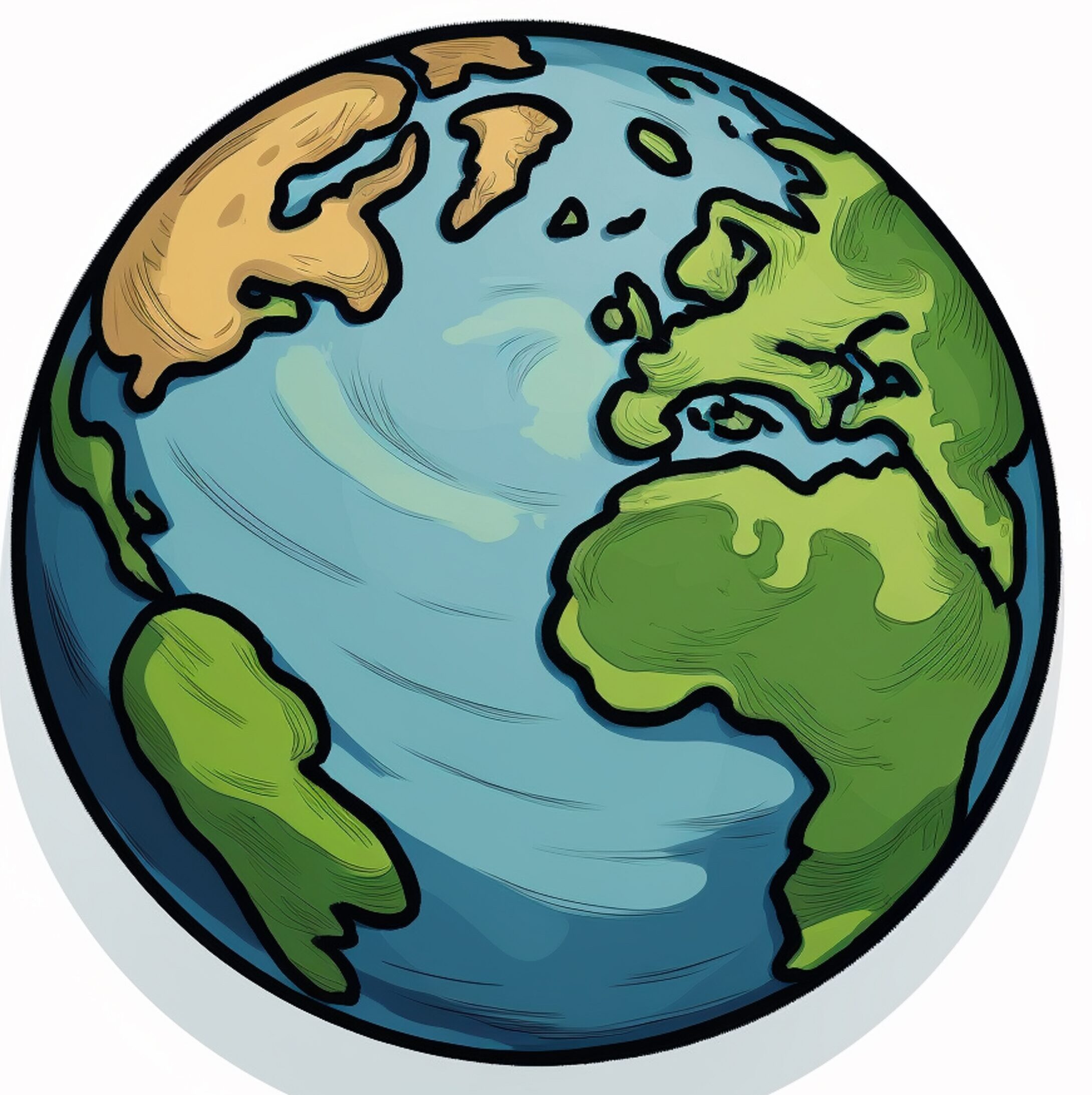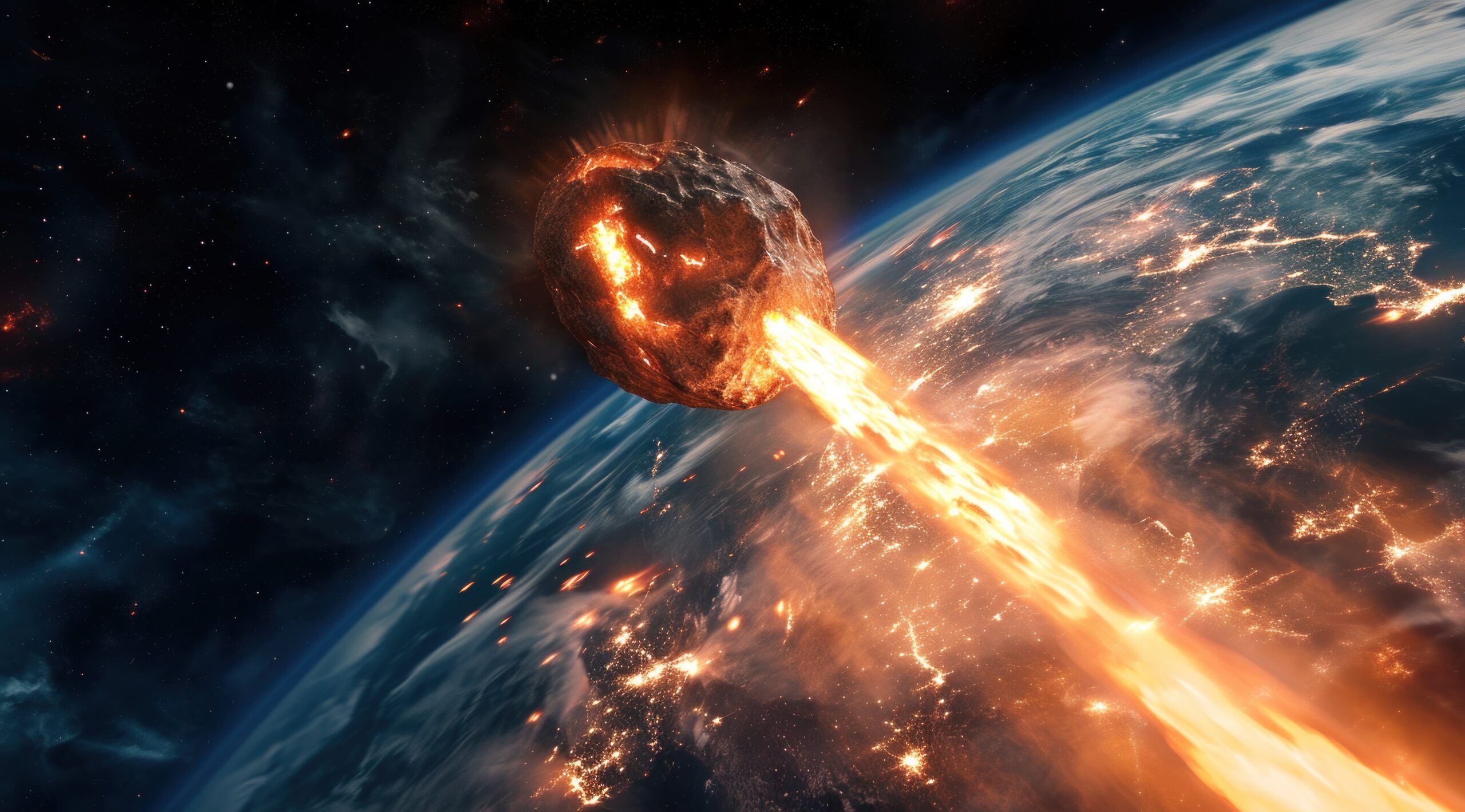When we think about the dangers facing humanity, the idea of an asteroid crashing into Earth might sound like science fiction. But it’s a real threat — one that scientists take very seriously. History, astronomy, and advanced technology all come together to help us understand what such an event could mean, and more importantly, how we can prevent or prepare for it.
A Look Back The Dinosaurs’ Fate
About 66 million years ago, a massive asteroid — estimated to be around 10 to 15 kilometers in diameter — struck what is now the Yucatán Peninsula in Mexico. The impact triggered a mass extinction event that wiped out nearly 75% of life on Earth, including the dinosaurs. This catastrophic event, known as the Chicxulub impact, released energy equivalent to billions of nuclear bombs. Fires, earthquakes, tsunamis, and a “nuclear winter” followed, where the sun was blocked by dust and ash for months.
This isn’t just history — it’s a warning.
How Likely is an Asteroid Strike?
Asteroids are rocky objects orbiting the sun, and many of them pass relatively close to Earth. NASA classifies any object larger than 140 meters that comes within 7.5 million kilometers as a “Potentially Hazardous Asteroid” (PHA). There are thousands of such objects being tracked.
While the chance of a large asteroid hitting Earth in our lifetime is low, the consequences would be devastating. Even smaller asteroids, like the one that exploded over Chelyabinsk, Russia, in 2013, can cause serious damage. That asteroid was only about 20 meters wide, yet it injured over 1,500 people and damaged thousands of buildings due to the shockwave.
What Would Happen If an Asteroid Hit Earth Today?
The outcome depends on the asteroid’s size, speed, and location of impact:
- Small Asteroid (Under 25 meters): Likely to burn up in Earth’s atmosphere. May cause a fireball or shockwave.
- Medium Asteroid (25-140 meters): Could destroy a city. Impact energy would be many times stronger than a nuclear bomb.
- Large Asteroid (Over 140 meters): Regional or global devastation. Could trigger climate change, tsunamis, or mass extinctions.
- Massive Asteroid (1 kilometer or more): Global catastrophe. Civilization as we know it could end.
If such an asteroid were to strike a densely populated area, the death toll could be in the millions. If it hit the ocean, massive tsunamis could flood coastal cities. In either case, infrastructure, agriculture, and climate would be severely affected.
How Are We Monitoring the Skies?
Fortunately, space agencies around the world — especially NASA, ESA (European Space Agency), and other observatories — are constantly scanning the skies. NASA’s Near-Earth Object (NEO) Program identifies and tracks objects that could pose a threat. They have already cataloged over 30,000 NEOs, and new ones are discovered almost daily.
The DART Mission (Double Asteroid Redirection Test), launched by NASA in 2021, was the first real test of asteroid deflection. In 2022, it successfully changed the orbit of a small asteroid called Dimorphos by crashing a spacecraft into it — proving that we might be able to alter an asteroid’s path in the future.
How Could We Stop an Asteroid?
There are several theoretical and practical ideas:
- Kinetic Impact: Hitting the asteroid with a spacecraft at high speed to change its direction — like NASA’s DART mission.
- Nuclear Explosion: Detonating a nuclear bomb near the asteroid to nudge it off course (not to blow it up, as that could create more problems).
- Gravity Tractor: A spacecraft could fly alongside an asteroid for years, using its gravitational pull to slowly alter the asteroid’s path.
- Laser Ablation: Using lasers to heat the asteroid’s surface, creating small jets of gas that push it away.
- Solar Sails or Mirrors: Focusing sunlight onto the asteroid to create a similar jetting effect.
These methods require years — even decades — of preparation. The key is early detection. The earlier we know about a threat, the more options we have to respond.
What About Earth’s Defense Systems?
Currently, there’s no “space shield” protecting Earth like in the movies. However, planetary defense is becoming a serious topic. NASA’s Planetary Defense Coordination Office (PDCO) works on tracking threats and planning responses. In case of a real threat, coordination between global governments would be crucial — not just for stopping the asteroid but also for preparing the public, evacuating areas, and managing the aftermath.
In 2021, the United Nations created guidelines for international cooperation on NEO threats, recognizing that this is a global issue — not one country’s responsibility alone.
Media vs. Reality How Movies Get It Wrong
Hollywood has explored this topic in films like Armageddon and Deep Impact. While entertaining, these movies often exaggerate or misrepresent scientific facts. For instance, drilling into an asteroid and blowing it up is far more difficult and dangerous than shown on screen. In reality, space missions take years of planning, precise engineering, and coordination.
That said, these films help raise public awareness — which is valuable. The more people understand the threat, the more likely we are to support real-life prevention efforts.

